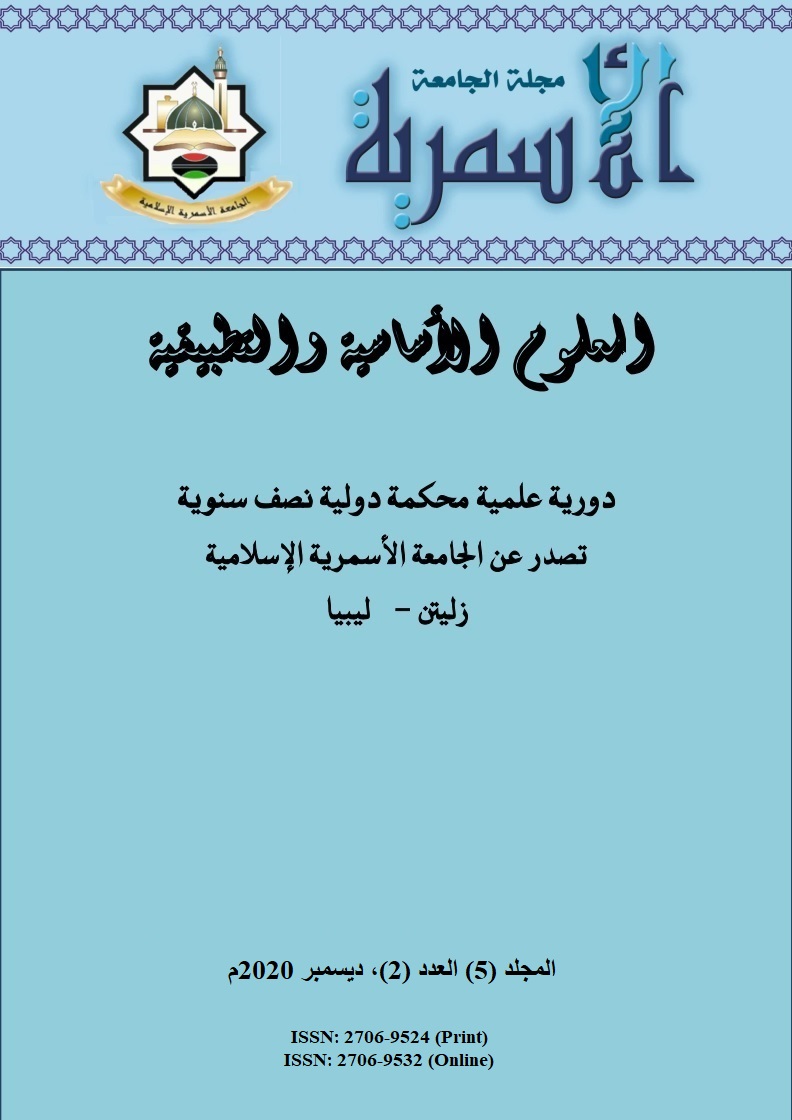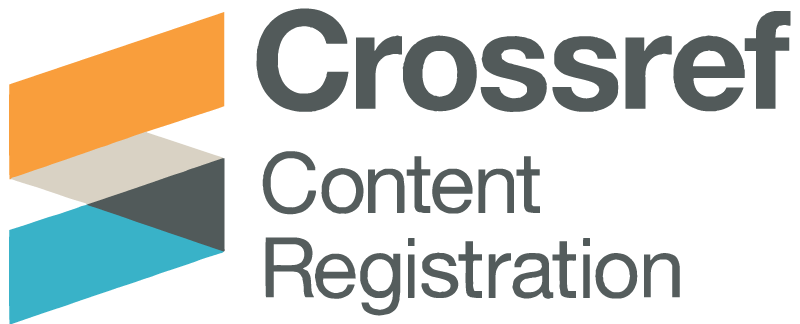Effect of Microwave Power on the Yield of Essential Oil from Lavender
DOI:
https://doi.org/10.59743/aujas.v5i2.1000Keywords:
Extraction, Microwave-assisted Extraction, Essential OilAbstract
Currently, microwave-assisted extraction (MAE) is the most widely used method to extract essential oil from several types of plants. MAE is considered to provide a shorter period for extraction and needs less amount of solvent compared to conventional methods. Hence, it should be an environment-friendly approach. In this particular study, the extraction of lavender oil was undertaken using the MAE method. This study aimed to investigate the effect of microwave power on the yield of essential oil from lavender. The experiment was conducted using a Miniflow 200SS instrument at microwave power ranging from 50 W to 200 W. The extraction temperature and ratio of material to solvent were constant at 100°C and 1:2 respectively. The maximum weight of lavender was approximately 15g. The highest yield of 1.8673%±0.054 was obtained with 175 W for 595 sec of microwave heating. The optimum microwave power was 150 W where the sample consumed 25.24 Wh and presented a yield of about 1.8346 ±0.049%. The obtained results have shown that microwave power has a slight improvement in the yield at higher microwave power if the same amount of energy is consumed by the materials.
References
Enna, S. J. & Norton, S. (2012). Herbal Supplements and the Brain: Understanding Their Health Benefits and Hazards, Pearson Education.
Ghods, A. A., Abforosh, N. H., Ghorbani, R. & Asgari, M. R. (2015). The effect of topical application of lavender essential oil on the intensity of pain caused by the insertion of dialysis needles in hemodialysis patients: A randomized clinical trial. Complementary Therapies in Medicine, 23, 325-330. DOI: https://doi.org/10.1016/j.ctim.2015.03.001
Chemat, F., Lucchesi, M. E., Smadja, J., Favretto, L., Colnaghi, G. & Visinoni, F. (2006). Microwave accelerated steam distillation of essential oil from lavender: A rapid, clean and environmentally friendly approach. Analytica Chimica Acta, 555, 157-160. DOI: https://doi.org/10.1016/j.aca.2005.08.071
Lis-Balchin, M. (2003). Lavender: The Genus Lavandula, Taylor & Francis. DOI: https://doi.org/10.1201/9780203216521
Kebede, A. & Hayelom, M. (2008). The Design and Manufacturing of Essential oil Distillation Plant for rural poverty Alleviation in Ethiopia. Ethiopian Journal of Environmental Studies and Management, 1, 81-91. DOI: https://doi.org/10.4314/ejesm.v1i1.41573
Cardoso-Ugarte, G. A., Juárez-Becerra, G. P., Sosa-Morales, M. E. & López-Malo, A. (2013). Microwave-assisted extraction of essential oils from herbs. J Microwave Power Electromagn Energy, 47, 63-72. DOI: https://doi.org/10.1080/08327823.2013.11689846
Thirugnanasambandham, K. & Sivakumar, V. (2015). Microwave assisted extraction process of betalain from dragon fruit and its antioxidant activities. Journal of the Saudi Society of Agricultural Sciences.
Afoakwah, A., Owusu, J., Adomako, C. & Teye, E. (2012). Microwave assisted extraction (MAE) of antioxidant constituents in plant materials. Global Journal of Bioscience and Biotechnology, 1, 132-140.
Périno-Issartier, S., Abert-Vian, M. & Chemat, F. (2011). Solvent free microwave-assisted extraction of antioxidants from sea buckthorn (Hippophae rhamnoides) food by-products. Food and Bioprocess Technology, 4, 1020-1028. DOI: https://doi.org/10.1007/s11947-010-0438-x
Chan, C.-H., Yusoff, R., Ngoh, G.-C. & Kung, F. W.-L. (2011). Microwave-assisted extractions of active ingredients from plants. Journal of Chromatography A, 1218, 6213-6225. DOI: https://doi.org/10.1016/j.chroma.2011.07.040
Farhat, A., Ginies, C., Romdhane, M. & Chemat, F. (2009). Eco-friendly and cleaner process for isolation of essential oil using microwave energy: experimental and theoretical study. Journal of Chromatography A, 1216, 5077-5085. DOI: https://doi.org/10.1016/j.chroma.2009.04.084
Chemat, F. & Cravotto, G. (2012). Microwave-assisted Extraction for Bioactive Compounds: Theory and Practice, Springer US. DOI: https://doi.org/10.1007/978-1-4614-4830-3
Bousbia, N., Vian, M. A., Ferhat, M. A., Meklati, B. Y. & Chemat, F. (2009). A new process for extraction of essential oil from Citrus peels: Microwave hydrodiffusion and gravity. Journal of food Engineering, 90, 409-413. DOI: https://doi.org/10.1016/j.jfoodeng.2008.06.034
Sahraoui, N., Vian, M. A., Bornard, I., Boutekedjiret, C. & Chemat, F. (2008). Improved microwave steam distillation apparatus for isolation of essential oils: comparison with conventional steam distillation. Journal of Chromatography A, 1210, 229-233. DOI: https://doi.org/10.1016/j.chroma.2008.09.078
Rafiee, Z., Jafari, S., Alami, M. & Khomeiri, M. (2011). Microwave-assisted extraction of phenolic compounds from olive leaves; a comparison with maceration. Journal of Animal & Plant Sciences, 21, 46-51.
Liu, X., Park, J. H., Abd El‐Aty, A., Assayed, M., Shimoda, M. & Shim, J. H. (2013). Isolation of volatiles from Nigella sativa seeds using microwave‐assisted extraction: effect of whole extracts on canine and murine CYP1A. Biomedical Chromatography, 27, 938-945. DOI: https://doi.org/10.1002/bmc.2887
Maran, J. P., Sivakumar, V., Thirugnanasambandham, K. & Sridhar, R. (2014). Microwave assisted extraction of pectin from waste Citrullus lanatus fruit rinds. Carbohydrate polymers, 101, 786-791. DOI: https://doi.org/10.1016/j.carbpol.2013.09.062
Thirugnanasambandham, K., Sivakumar, V. & Maran, J. P. (2015). Microwave-assisted extraction of polysaccharides from mulberry leaves. International journal of biological macromolecules, 72, 1-5. DOI: https://doi.org/10.1016/j.ijbiomac.2014.07.031
Li, N., Wu, L., Nian, L., Song, Y., Lei, L., Yang, X., Wang, K., Wang, Z., Zhang, L. & Zhang, H. (2015). Dynamic microwave assisted extraction coupled with dispersive micro-solid-phase extraction of herbicides in soybeans. Talanta, 142, 43-50. DOI: https://doi.org/10.1016/j.talanta.2015.04.038
Wang, Y.-L., Xi, G.-S., Zheng, Y.-C. & Miao, F.-S. (2010). Microwave-assisted extraction of flavonoids from Chinese herb Radix puerariae (Ge Gen). J. Med. Plants Res, 4, 304-308.
Filly, A., Fernandez, X., Minuti, M., Visinoni, F., Cravotto, G. & Chemat, F. (2014). Solvent-free microwave extraction of essential oil from aromatic herbs: From laboratory to pilot and industrial scale. Food Chemistry, 150, 193-198. DOI: https://doi.org/10.1016/j.foodchem.2013.10.139
Hu, Z., Cai, M. & Liang, H.-H. (2008). Desirability function approach for the optimization of microwave-assisted extraction of saikosaponins from Radix Bupleuri. Separation and Purification Technology, 61, 266-275. DOI: https://doi.org/10.1016/j.seppur.2007.10.016
Gfrerer, M. & Lankmayr, E. (2005). Screening, optimization and validation of microwave-assisted extraction for the determination of persistent organochlorine pesticides. Analytica Chimica Acta, 533, 203-211. DOI: https://doi.org/10.1016/j.aca.2004.11.016
Ma, C.-H., Liu, T.-T., Yang, L., Zu, Y.-G., Chen, X., Zhang, L., Zhang, Y. & Zhao, C. (2011). Ionic liquid-based microwave-assisted extraction of essential oil and biphenyl cyclooctene lignans from Schisandra chinensis Baill fruits. Journal of Chromatography a, 1218, 8573-8580. DOI: https://doi.org/10.1016/j.chroma.2011.09.075
Yan, M.-M., Liu, W., Fu, Y.-J., Zu, Y.-G., Chen, C.-Y. & Luo, M. (2010). Optimisation of the microwave-assisted extraction process for four main astragalosides in Radix Astragali. Food Chemistry, 119, 1663-1670. DOI: https://doi.org/10.1016/j.foodchem.2009.09.021
Holmes, A. O. (2013). Modeling-Based Scale-Up of Reactors in Microwave-Assisted Chemistry. WORCESTER POLYTECHNIC INSTITUTE.
Denny, E. (1991). Field distillation for herbaceous oils, Denny Mckenzie Associates.
Song, J., Li, D., Liu, C. & Zhang, Y. (2011). Optimized microwave-assisted extraction of total phenolics (TP) from Ipomoea batatas leaves and its antioxidant activity. Innovative Food Science & Emerging Technologies, 12, 282-287. DOI: https://doi.org/10.1016/j.ifset.2011.03.001
Downloads
Published
How to Cite
Issue
Section
License
Copyright (c) 2020 خالد علي عبيد

This work is licensed under a Creative Commons Attribution 4.0 International License.
The rights relate to the publication and distribution of research published in the Journal of Alasmarya University where authors who have published their articles in the Journal of Alasmarya University should Know how they can use or distribute their articles. They reserve all their rights to the published works, such as (but not limited to) the following rights:
- Copyright and other property rights related to the article, such as patent rights.
- Copyright on all open access article in Journal of Alasmarya published by Alasmarya Islamic University is retained by the author(s) and they can used in it's future works, including lectures and books, the right to reproduce articles for their own purposes, and the right to self-archive their articles..
- Authors grant Alasmarya Islamic University a license to publish the article and identify itself as the original publisher.
- Authors also grant any third party the right to use the article freely as long as its integrity is maintained and its original authors, citation details and publisher are identified.
The Creative Commons Attribution License 4.0 formalizes these and other terms and conditions of publishing articles










